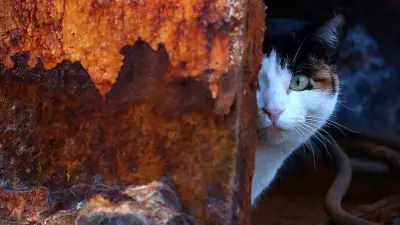Remains of domestic cats found in wreckage of ancient ship were likely first to arrive in United States

Cats have lived alongside humans for thousands of years and the remains of two domestic felines uncovered in a nearly -year-old Spanish shipwreck likely represent the earliest example of the animal in what is now the United States according to a new examination Cats accompanied sailors on ships where they were relied on to hunt rats and mice that were infesting ships holds researchers wrote in a review published in American Antiquity last month The Emanuel Point II a Spanish conquistador ship wrecked in Florida s Pensacola Bay in during a hurricane The shipwreck was discovered in and the researchers commented the remains of an adult and juvenile cat were identified in the wreckage ARCHAEOLOGISTS FIND WELL-PRESERVED ROMAN-ERA DOG REMAINS Cats have received limited archaeological attention because their independence limits direct insight into human societies the researchers revealed The inquiry commented that analyses of the two cats and other historical cat remains show the pets ranged dramatically in size from normal house cats to much smaller The researchers wrote that based on a chemical analysis of the remains the adult cat doesn t seem to have relied on rats for food and mainly ate a diet of fish and possibly domestic meat These pests were unintentionally introduced to the New World and cats would have followed hunting both native and invasive pests the inquiry declared of rats Within the U S early cat remains have also been exposed in the colonial settlements in St Augustine Florida and the British colony of Jamestown in Virginia and were possibly aboard the Mayflower LOST CAT MAKES -MILE JOURNEY BACK HOME TO CALIFORNIA FROM YELLOWSTONECats aren t native to the U S and are maintained to have originated in the Middle East before they were brought to the Americas by Europeans They were likely introduced to Europe for pest control the scientists stated The researchers announced they weren t sure if the cats on the Emanuel Point II were brought on board intentionally but survey co-author John Bratten an anthropologist at the University of West Florida advised Live Science the cats apparently ate a similar diet to the sailors which displayed that they were fed either because there weren t enough rats or out of kindness It was captivating to think about the idea of the cat being a pet or one that was looked after by the Spanish sailors Bratten reported Live Science CLICK HERE TO GET THE FOX NEWS APPThe assessment announced That cats were on board the Emanuel Point II suggests their primary role may have been as commensal ratters and mousers that kept the onboard rodent population in check This does not however preclude the possibility that these cats were well liked and cared for by the sailors Cats were also considered lucky by sailors the researchers added Currently one in three U S households has a pet cat

